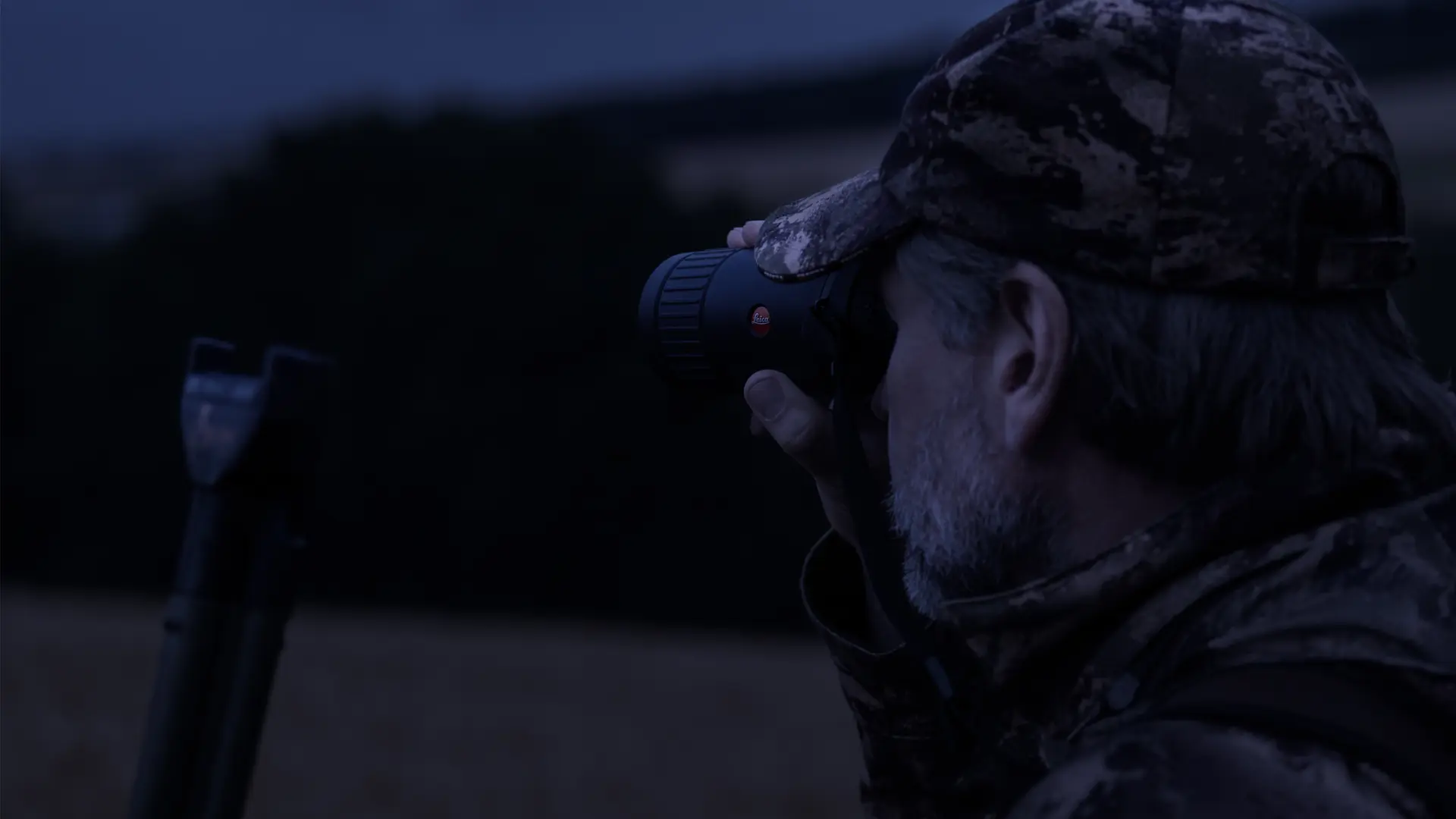
Leica thermal cameras.
How the image is created at night.
Every body permanently emits electromagnetic radiation: reflected radiation from light sources as well as thermal radiation. However, our eye can only process the reflected radiation, and only in the range of visible light. A large part of the reflected radiation in the ultraviolet and infrared range cannot be perceived by the human eye. Classic hunting optics such as binoculars and riflescopes are optimized to transmit visible light with as little loss as possible. The predestined lens material for this is glass, since it transmits well over 90 % of the visible spectrum.
At night, only very weak light sources are available, so hardly any light is reflected by the environment. The eye reaches its limit, due to the spectrum of visible light, and detailed vision is no longer possible.


